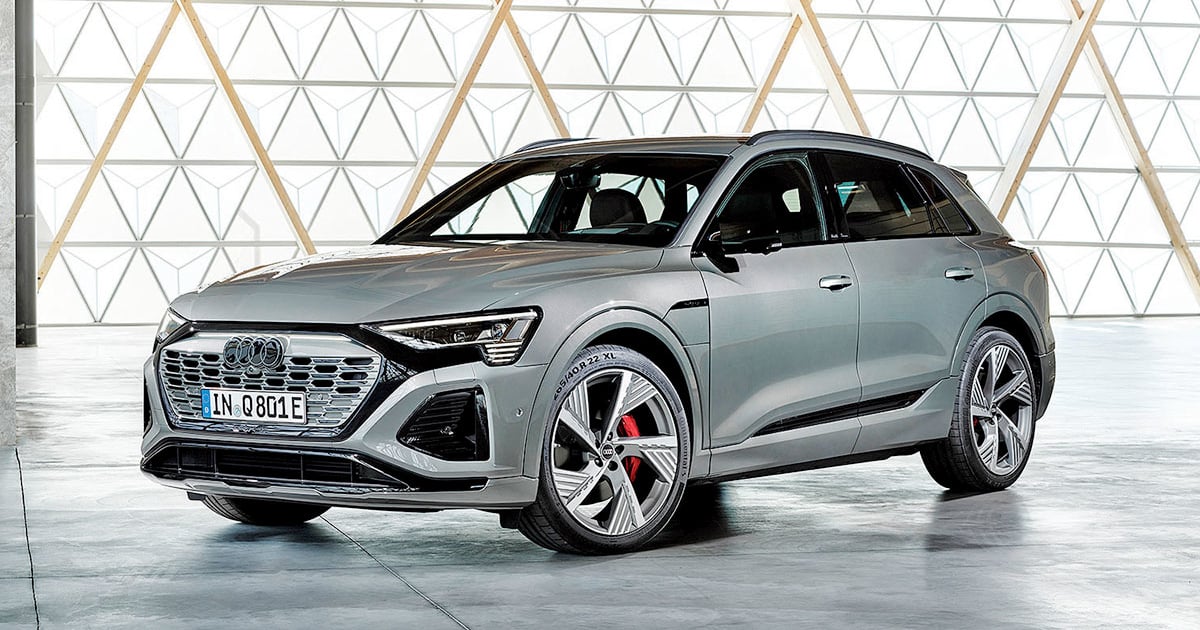
BRUSSELS — In a major makeover, the Audi E-tron is getting a new name, a new look and substantial improvements that address what was considered its major drawback when it launched in 2018 as Volkswagen Group’s first modern electric vehicle: uncompetitive range.
The first salable 2023 Audi Q8 E-tron rolled off its assembly line here Wednesday, driven by Plant Manager Volker Germann and now sporting an estimated range of up to 600 kilometers (373 miles) under the Worldwide Harmonized Light Vehicles Test Procedure used in Europe.
The now Q8 E-tron, in both crossover and sportback versions, is expected to head to dealerships in the U.S. in mid-2023. Audi didn’t release an expected range under EPA testing, but it would roughly translate to as much as 330 miles. By comparison, when the original E-tron arrived in the U.S. in 2019, it was rated at just 212 miles.
The Q8 E-tron’s 600-kilometer maximum range will be available in the more aerodynamic sportback version with the larger 115-kilowatt-hour battery pack installed, while the squared-off crossover will have a maximum range of 582 kilometers (362 miles) with the larger pack, Audi said. Both versions will come standard with a 95-kWh battery pack, however.
The range improvements come from a combination of new battery chemistry, including the way the battery cathode and anode are constructed, and gains in aerodynamics and engineering, plant level Audi executives here said.
The original E-tron, also built here, was powered by battery cells from supplier LG, while the Q8 E-tron is powered with cells from Samsung SDI. Audi’s Brussels plant produced about 160,000 E-trons since the first-generation vehicle launched, Germann said.
In addition to the Q8 E-tron start of production, Audi on Wednesday said it would employ the Brussels plant to add production capacity for the Q4 E-tron, currently made exclusively at the VW Group plant in Zwickau, Germany. The Q4 E-tron — built on the same MEB modular platform as the Volkswagen ID3 and ID4 — will begin production at Brussels in the second half of 2023 at a rate of about 70 vehicles per day, executives said, and will not require additional workers to do so.